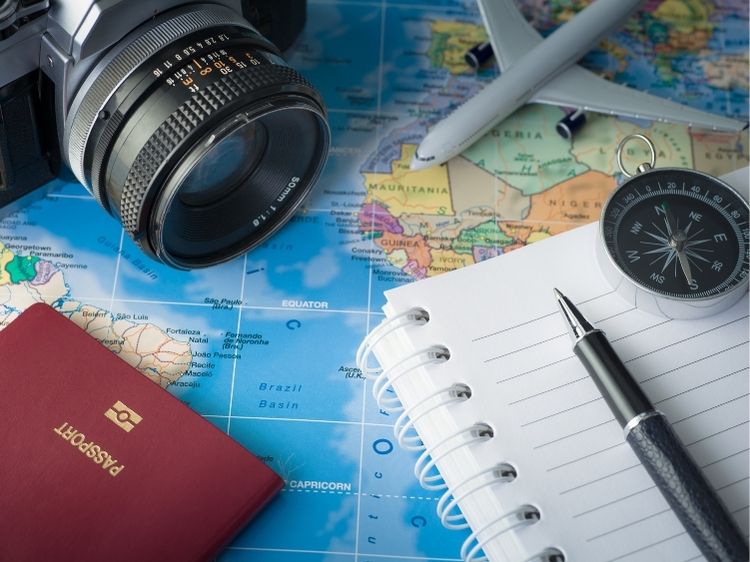What Is a Travel Advisory?
Travel advisories are official warnings issued by governments or organizations to inform citizens about potential risks in certain destinations. These risks can range from natural disasters to political unrest, crime rates, or even health hazards like pandemics.
While many view travel advisories as restrictive, they’re actually designed to empower travelers with vital information to make informed decisions. After all, who doesn’t want a smooth, stress-free trip?
Types of Travel Advisories
Travel advisories can vary depending on the source and the nature of the risks. Here are the common categories:
- Health-Related Advisories
- Issued during outbreaks (think COVID-19 or Ebola).
- Include vaccination requirements, quarantine regulations, and health risks.
- Safety and Security Alerts
- Focus on crime rates, terrorism threats, or civil unrest.
- Highlight areas to avoid or safety precautions to take.
- Weather and Natural Disasters
- Warn about hurricanes, earthquakes, or floods.
- Provide tips on how to stay safe during these events.
- Transportation Warnings
- Highlight issues with local transport systems, road conditions, or aviation safety.
Why Are Travel Advisories Important?
Travel advisories aren’t meant to scare you—they’re there to help you plan better. Here’s why you should always pay attention:
- Avoid Dangerous Situations: They highlight areas with risks, helping you steer clear of trouble.
- Stay Compliant: Some advisories include legal requirements like visas, permits, or customs restrictions.
- Prepare for Emergencies: Knowing potential risks means you can pack and plan accordingly.
How to Check Travel Advisories
You don’t have to be Sherlock Holmes to find reliable travel advisories. Here are some trusted sources:
- Government Websites
- The U.S. Department of State (travel.state.gov).
- Canada’s Travel and Tourism page (travel.gc.ca).
- UK’s Foreign Travel Advice (gov.uk/foreign-travel-advice).
- Health Organizations
- World Health Organization (who.int).
- Centers for Disease Control and Prevention (cdc.gov).
- Travel Apps
- Apps like Smart Traveler or TripIt provide real-time updates on travel advisories.
How to Use Travel Advisories
Here’s the thing: travel advisories aren’t meant to be taken at face value. Follow these steps to get the most out of them:
- Evaluate the Source
- Stick to official government or organization websites.
- Avoid sensationalized news stories.
- Assess the Risk Level
- Advisories often include a risk scale, from “Exercise Normal Precautions” to “Do Not Travel.”
- Understand what each level means for your trip.
- Plan Accordingly
- For moderate risks, take extra precautions.
- If it’s a high-risk area, consider alternative destinations.
Top Tips for Safe Travels
Let’s face it—traveling comes with its own set of challenges. Here are some handy tips to keep you safe:
- Register with Your Embassy: Always let your local embassy know your travel plans.
- Keep Copies of Important Documents: Passport, visas, and insurance details should be duplicated and stored safely.
- Stay Updated: Follow local news and updates during your trip.
- Blend In: Avoid standing out as a tourist by dressing modestly and respecting local customs.
- Have Emergency Contacts Handy: This includes your embassy’s number, local police, and healthcare providers.
Frequently Asked Questions (FAQs)
1. What’s the difference between a travel alert and a travel advisory?
Travel alerts are usually short-term warnings about specific events like protests or natural disasters. Travel advisories, on the other hand, provide ongoing risk assessments for destinations.
2. Should I cancel my trip if there’s a travel advisory?
Not necessarily! Assess the advisory’s risk level and decide if you can mitigate those risks with proper precautions.
3. Are travel advisories legally binding?
No, they’re guidelines. However, ignoring them can void your travel insurance in some cases.
4. How often are travel advisories updated?
Updates vary depending on the situation. High-risk areas may see daily updates, while others are reviewed periodically.
5. Can I travel during a Level 4 advisory?
Level 4 means “Do Not Travel.” While you can technically still go, it’s highly discouraged due to severe risks.
Conclusion: Travel Smart, Stay Safe
Travel advisories might seem like roadblocks, but they’re actually valuable tools for every traveler. By staying informed, planning ahead, and taking the necessary precautions, you can explore the world with confidence.
So, whether you’re backpacking through Southeast Asia or heading to a European city, check the travel advisory, pack your essentials, and enjoy the journey!
Authoritative Sources for Travel Advisories
- travel.state.gov
- cdc.gov
- who.int
- travel.gc.ca
- gov.uk/foreign-travel-advice
